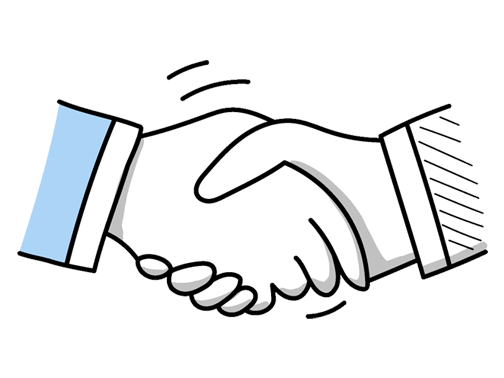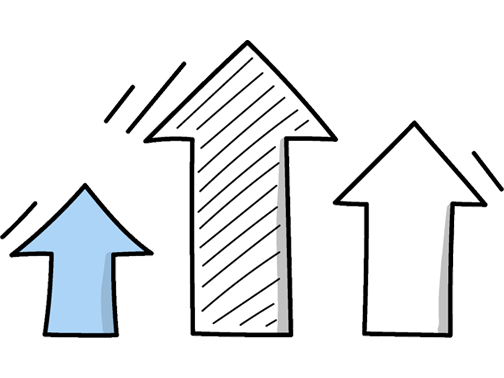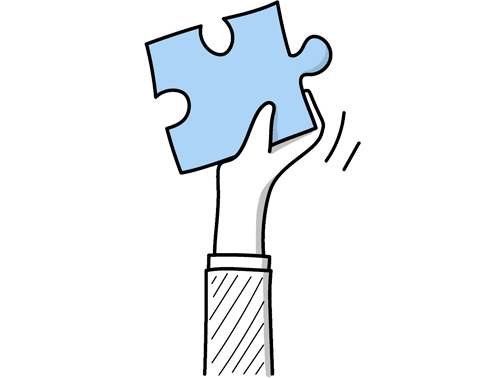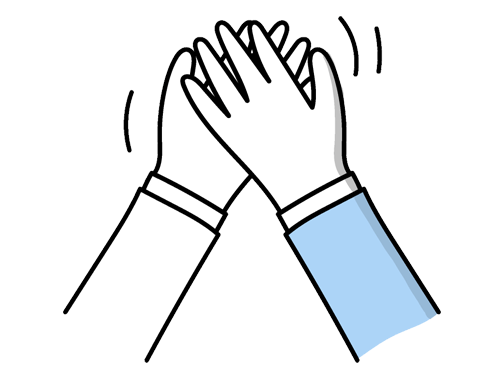Civil Engineer Interview Questions (2025 Guide)
Find out common Civil Engineer questions, how to answer, and tips for your next job interview
Practice Interviews Online - Identify your strengths and weakness in a realistic Civil Engineer mock interview, under 10 minutes
Practice Now »Civil Engineer Interview Questions
Hiring managers ask this question to see how you approach difficult challenges and apply your technical skills in real situations. You need to explain the problem clearly, outline your thought process and actions, and highlight the successful outcome or what you learned.
Example: In a recent project, we faced unexpected ground instability that threatened the foundation design. I worked closely with geotechnical experts to reassess soil data and adapted the foundation approach, introducing deeper pile foundations. This solution ensured safety without delaying the schedule. It was rewarding to navigate the complexity through collaboration and quick decision-making, ultimately maintaining the project's integrity and timeline.
Interviewers want to see that you can communicate complex information clearly to diverse audiences. You need to say you simplify technical terms, use visuals, and focus on key points to make your reports accessible to non-engineers.
Example: I focus on clear, simple language and avoid jargon whenever possible. I use visuals like charts or diagrams to illustrate key points, making complex data easier to grasp. When I’ve worked on projects, I’ve found that relating technical details to everyday examples helps bridge the gap. Also, I always encourage questions to ensure everyone feels comfortable with the information presented.
Questions like this assess your problem-solving skills and your ability to find lasting solutions in complex projects. You need to explain how you gather and analyze data, break down the problem methodically, and collaborate with others to pinpoint the root cause effectively.
Example: When faced with a problem, I start by collecting all relevant information and reviewing the details closely. I break the issue down into smaller parts to understand where things might be going wrong. Throughout the process, I engage with team members and stakeholders to gain different perspectives. For example, on a recent project, discussing site concerns with contractors helped uncover hidden drainage issues affecting the foundation.
This question aims to assess your ability to accept and use feedback to improve your work and maintain good professional relationships. You need to say you listen carefully to understand the feedback, ask questions to clarify if needed, and apply the insights to enhance your project outcomes.
Example: I see feedback as a valuable part of the process. When clients or supervisors share their thoughts, I listen carefully and ask questions to fully understand their perspective. This helps me identify areas where I can improve or adjust my work. For example, in a recent project, feedback on design details led me to rethink materials, which ultimately enhanced the structure’s durability. I always follow up to ensure the changes meet expectations.
This interview question aims to assess your ability to manage time and resources effectively in a civil engineering project. You need to explain that you use detailed planning, regular progress monitoring, and proactive communication to keep the project on track.
Example: I focus on clear planning and regular communication to keep projects on track. Setting realistic milestones helps monitor progress effectively. For example, on a recent bridge project, weekly team check-ins allowed us to identify delays early and adjust resources promptly, avoiding costly overruns. Staying flexible and proactive ensures deadlines are met without compromising quality.
This question assesses your understanding of the fundamental factors that ensure a retaining wall's safety and effectiveness. You need to explain that you consider soil properties and site conditions, structural stability and load resistance, and include proper drainage and waterproofing in your design.
Example: When designing a retaining wall, it’s important to start by understanding the ground it will hold back—the type of soil and any site challenges really shape the approach. The wall must be strong enough to handle the pressure from the earth and any nearby loads, like traffic or buildings. Also, managing water is crucial; without proper drainage, water buildup can cause failure, so incorporating ways to channel water away helps keep the structure safe and durable.
What they want to see is your creativity and problem-solving skills when faced with challenges. You need to describe a specific project where you identified an unusual solution that improved outcomes or efficiency.
Example: On a recent bridge project, we faced unexpected ground conditions that threatened delays. Instead of standard piling, I proposed using a hybrid foundation combining micro-piles with soil improvement techniques. This approach wasn’t typical locally but sped up construction and cut costs. It was rewarding to see how a fresh perspective helped us adapt efficiently and keep the project on track.
This question helps interviewers understand your problem-solving process and attention to detail when facing structural challenges. You need to explain that you systematically assess the issue by gathering data, analyzing the structure, identifying root causes, and then applying engineering principles to develop safe, effective solutions.
Example: When troubleshooting structural issues, I start by gathering detailed data—inspecting the site and reviewing design documents. Understanding the context helps identify potential causes. I then prioritise safety while analysing materials and load factors. For example, on a recent project, I spotted unexpected settlements by comparing initial surveys with current conditions, which guided targeted repairs. Clear communication with the team ensures solutions are practical and effective.
This interview question aims to assess your interpersonal and problem-solving skills in a team setting. You need to explain the conflict clearly, describe your role in mediating it, and highlight the positive outcome you helped achieve.
Example: In one project, two team members disagreed on the design approach, which was slowing progress. I arranged a quick meeting where each could explain their perspective. By focusing on the project goals rather than personal preferences, we found a compromise that combined the best ideas from both sides. This not only resolved the conflict but also strengthened the team’s collaboration moving forward.
Employers ask this to assess your practical knowledge of geotechnical analysis and safe structural design. You need to explain conducting soil tests like standard or cone penetration tests, interpreting the data to calculate bearing capacity using accepted methods, and applying safety factors and regulations to ensure stability.
Example: To determine a soil’s load-bearing capacity, I start with site investigations, collecting samples for tests like the standard penetration test or triaxial shear test. These help establish strength and settlement characteristics. Interpreting this data allows me to recommend suitable foundation types. I always factor in local conditions, such as moisture or layering, to ensure safety and longevity—for example, adjusting designs for clay soils prone to shrinkage.
What they want to understand is how you communicate effectively and maintain transparency with all parties involved to ensure the project stays on track. You need to say that you use regular updates through meetings, reports, and digital tools to provide clear, timely information and address any concerns promptly.
Example: I keep stakeholders informed through regular updates tailored to their interests, whether via clear progress reports, concise emails, or brief meetings. For example, during a recent bridge project, I shared weekly summaries highlighting key milestones and challenges, which helped everyone stay aligned and address issues promptly. It’s about maintaining open communication so that everyone feels involved and confident in how the project is moving forward.
Employers ask this question to assess your technical knowledge and practical understanding of foundation types and their application based on soil conditions and construction challenges. In your answer, clearly describe common foundations like shallow strip or raft foundations, explain how soil bearing capacity influences your choice, and briefly outline key construction steps for each type.
Example: Foundations vary based on ground conditions and building needs. Shallow foundations like strip and pad footings suit stable soils for smaller structures, while deep foundations such as piles and caissons are used on weak or expansive soils to reach solid layers. Understanding soil behaviour is crucial, as poor choice can lead to settlement issues. For example, piled foundations support bridges where the ground can’t bear heavy loads, ensuring stability over time.
This interview question aims to assess your teamwork skills and ability to contribute effectively in a collaborative environment. You need to describe a specific project, your role, and how your contributions helped the team achieve its goals.
Example: During a recent highway improvement project, our team collaborated closely to address unexpected ground conditions. By sharing expertise and maintaining open communication, we adjusted designs swiftly, keeping the project on schedule and within budget. This experience highlighted how teamwork and flexibility are vital in civil engineering to overcome challenges and deliver successful outcomes.
What they want to understand is how you prioritize clear and consistent communication to prevent misunderstandings and keep projects on track. You need to say that you use regular meetings, open channels for feedback, and clear documentation to ensure everyone is informed and aligned.
Example: I focus on clear, open dialogue by encouraging everyone to share updates regularly. For example, during a recent project, brief daily stand-ups helped us quickly address issues. I also make sure to listen actively and adapt my communication style to suit the team, whether that’s written reports or face-to-face chats. This approach keeps everyone on the same page and builds trust within the team.
This question assesses your ability to manage project finances and ensure costs stay within limits. You need to explain your methods for estimating expenses, monitoring spending, and making adjustments to avoid overruns.
Example: In my previous projects, I’ve managed budgets closely, ensuring costs stayed within limits without compromising quality. For example, on a road construction project, I regularly reviewed expenses and adjusted plans to avoid overspending. This hands-on approach helped keep the project on track financially while meeting deadlines and specifications. I find clear communication with contractors and stakeholders key to effective cost control.
Interviewers ask this question to see how you lead and keep your team productive under pressure. You need to explain how you set clear goals, assign tasks based on strengths, and maintain motivation during setbacks to ensure project success.
Example: When leading a team, I focus on defining clear objectives so everyone knows what success looks like. I also make it a point to understand each member’s strengths and align tasks accordingly, which keeps them engaged. During tougher phases, I keep communication open and celebrate small wins to boost morale. For example, on a recent project, acknowledging a team member's innovative solution really lifted the group's spirits and kept momentum going.
Interviewers ask this to assess your technical skills and practical experience with industry-standard software. You need to mention the specific tools you know, like AutoCAD or Civil 3D, and briefly explain how you used them in real projects, such as designing road layouts or site plans.
Example: I’m comfortable using software like AutoCAD and Civil 3D for detailed design and site planning, which I’ve applied in several infrastructure projects to improve accuracy and efficiency. I’ve also worked with BIM tools to coordinate multidisciplinary workflows. While I keep up with emerging technologies, I’m keen to expand my skill set as new software becomes relevant in the field.
This question assesses your ability to convey complex engineering ideas clearly to diverse audiences, ensuring collaboration and project success. In your answer, describe a specific instance where you simplified a technical concept for non-experts, highlighting your communication approach and its positive outcome.
Example: In a recent project, I explained complex soil stability data to a non-technical client by using simple visuals and relatable analogies. This helped them understand potential risks without getting lost in jargon, allowing us to make informed decisions together. Clear communication like this ensures everyone stays aligned, which is crucial in engineering projects.
This question assesses your adaptability and problem-solving skills when projects don’t go as planned. You need to say that you stay calm, communicate clearly with stakeholders, and adjust plans efficiently to keep the project on track.
Example: When project scope changes or unexpected issues arise, I stay calm and assess the impact carefully. I communicate promptly with the team and stakeholders to understand priorities and adjust plans accordingly. For example, on a recent bridge project, when unforeseen ground conditions appeared, we quickly revised the design and schedule, keeping everyone informed to minimize delays. Flexibility and clear communication are key to navigating these challenges smoothly.
Interviewers ask this question to see if you understand and actively manage safety risks on site, ensuring laws and standards like the CDM Regulations are followed. In your answer, clearly state your knowledge of these regulations, explain how you conduct regular inspections and audits, and describe how you quickly address and report any safety hazards.
Example: Ensuring safety on site starts with knowing the regulations inside out, like CDM 2015 and relevant HSE guidelines. I make it a point to regularly walk the site, engaging with the team to spot any risks early. When issues arise, I act quickly to fix them, whether that means revising procedures or providing extra training. For example, on a recent project, this approach helped prevent a potential fall hazard before it became serious.
What they want to know is how you ensure your engineering solutions truly work and deliver value. You need to explain how you measure outcomes with metrics like cost-benefit analysis, gather feedback from clients and contractors, and adapt your designs based on these insights.
Example: When assessing my solutions, I look at clear indicators like project timelines, safety records, and cost efficiency to see if goals are met. I also seek input from team members and clients to ensure the solution works in practice. If feedback or data suggests improvements are needed, I’m ready to refine the approach. For example, on a recent bridge project, adjusting materials after testing saved time and improved durability.
This question assesses your ability to communicate technical details clearly to non-experts, a vital skill in civil engineering. You need to explain the situation briefly, highlight how you simplified the information, and describe the positive outcome for the client.
Example: During a highway redesign project, I explained detailed engineering plans to a local council concerned about environmental impact. I used clear visuals and related technical data to everyday terms, which helped them understand the benefits and challenges without jargon. This approach made the discussion more collaborative, allowing us to address their concerns and proceed confidently with the design.
Hiring managers ask this question to see how you manage complex projects by balancing urgency, impact, and coordination. You need to explain that you evaluate deadlines and dependencies to set task order, communicate with all stakeholders to align priorities, and use project management tools like MS Project or Primavera to monitor and adjust the workflow.
Example: In managing a large construction project, I first evaluate which tasks directly affect key deadlines and safety. Then, I keep open communication with my team and contractors to ensure everyone’s aligned on priorities. Using tools like Gantt charts helps me track progress and adjust plans as needed. For example, during a recent project, this approach helped us resolve delays quickly and keep everything on schedule.
This question assesses your ability to communicate clearly, coordinate efforts, and solve problems collaboratively across different teams. You should say that you use clear, simple language to explain technical information, organize meetings to ensure everyone is aligned, and actively work to resolve any conflicts that arise to keep the project on track.
Example: In my experience, I focus on keeping communication clear and consistent, ensuring everyone understands their roles and deadlines. For example, during a recent project, I coordinated closely with the design and planning teams to resolve site issues quickly, which kept the schedule on track. I also listen carefully to feedback from all parties, adapting plans when needed to find practical solutions that satisfy everyone involved.
This interview question assesses your understanding of the critical initial steps in project planning and how you ensure accurate data collection. You need to explain that you begin by researching the site, then use precise measurement tools to assess topography, existing structures, and environmental conditions.
Example: Conducting a site survey begins with reviewing the project plans and visiting the site to assess conditions firsthand. I’d note existing structures, terrain, and any potential challenges like drainage or access. Taking measurements and photographs helps capture details accurately. For example, on my last project, identifying underground utilities early saved time and costs later. This groundwork ensures designs are practical and tailored to the site’s unique features.
Ace your next Civil Engineer interview with even more questions and answers
Common Interview Questions To Expect
The interviewer is looking for a candidate to demonstrate their qualifications, skills, experience, and passion for the role. Answers should highlight how the candidate's background aligns with the job requirements and how they can contribute to the company's success.
Example: Well, I have a strong background in civil engineering with a focus on infrastructure projects. My experience working on large-scale construction projects has equipped me with the skills needed for this role. I am passionate about creating sustainable and efficient solutions for the community, and I believe I can bring valuable contributions to your team.
Candidates can answer by stating a specific salary range, mentioning their flexibility, or asking about the company's salary structure. Interviewers are looking for candidates who are realistic, informed about industry standards, and open to negotiation.
Example: I'm looking for a salary in the range of £40,000 to £50,000, but I'm open to discussing based on the company's salary structure and benefits. I've done some research on industry standards and believe this range is fair for my level of experience and qualifications. I'm also open to negotiation if needed.
The interviewer is looking for how you handle constructive criticism, your ability to reflect on feedback, and how you have used criticism to improve your work.
Example: Sure! In my previous role, I received feedback from a senior engineer about my design approach on a project. Instead of getting defensive, I took the feedback on board and made adjustments to improve the design. Ultimately, the project was successful and I learned a valuable lesson in receiving and implementing constructive criticism.
The interviewer is looking for a clear and concise explanation of why you transitioned from one career to another. Be honest about your reasons and highlight any relevant skills or experiences gained from your previous career.
Example: I decided to change career paths because I wanted to pursue my passion for designing and building structures that benefit society. My previous career gave me valuable skills in project management and problem-solving, which I can now apply to my work as a civil engineer. I am excited about the opportunities and challenges that come with this new career path.
The interviewer is looking for your commitment to ongoing learning and growth in your field. You can answer by discussing courses, certifications, conferences, or other ways you plan to stay current in civil engineering.
Example: I plan to continue my professional development by attending relevant conferences and workshops, as well as pursuing certifications in specialized areas of civil engineering. I believe that staying current with industry trends and advancements is crucial to providing the best solutions for our projects. Additionally, I am always looking for opportunities to expand my knowledge and skills through online courses and networking with other professionals in the field.
Company Research Tips
The company's official website is a goldmine of information. Look for details about the company's history, mission, vision, and values. Pay special attention to their projects, especially those related to civil engineering. This will give you an idea of the kind of work they do and their approach towards it. Also, check out their news or blog section to stay updated with their recent activities and achievements.
Tip: Don't just skim through the website. Take notes of important points and try to understand how you can contribute to their ongoing projects or how your skills align with their needs.
LinkedIn can provide valuable insights about the company. You can check the profiles of current and former employees, especially those who held or hold a civil engineering position. This can give you an idea about the skills and experience the company values. Also, follow the company's LinkedIn page to get updates about their recent activities, job postings, and company culture.
Tip: Try to connect with current or former employees. They might provide you with insider information that can be beneficial for your interview.
Industry news and trade publications can provide information about the company's standing in the industry, their competitors, and recent industry trends. This can help you understand the company's market position and how they are adapting to industry changes. Look for articles or news related to civil engineering in the UK to stay updated with the latest trends and technologies.
Tip: Use this information to show your knowledge about the industry during the interview. Discuss how the company can leverage the latest trends or technologies in their projects.
Glassdoor provides reviews from current and former employees about the company's work environment, management, salary, benefits, and more. This can give you an idea about the company's culture and what to expect if you get the job. However, take these reviews with a grain of salt as they are subjective and can vary greatly.
Tip: Look for common themes in the reviews. If many employees are praising or complaining about the same thing, it's likely to be true.
What to wear to an Civil Engineer interview
- Dark-colored business suit
- White or light-colored dress shirt
- Conservative tie
- Polished dress shoes
- Minimal and professional accessories
- Neat and clean grooming





